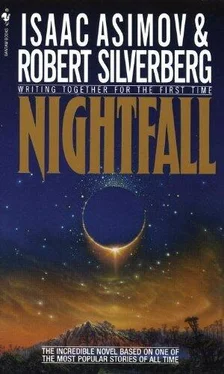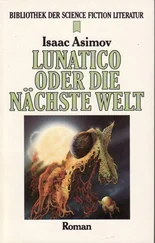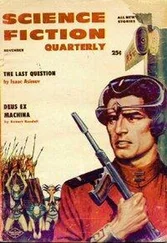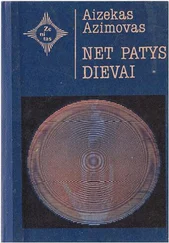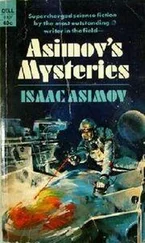Siferra said suddenly, “May I speak, Dr. Athor?”
“Of course. Of course! That’s why you’re here.”
The archaeologist rose and came to the center of the room. “In some ways it surprises me that I’m here at all. When I first discussed my Sagikan Peninsula discoveries with Beenay here, I begged him to keep them absolutely confidential. I was fearful for my scientific reputation, because I saw that the data I had uncovered could very easily be construed as giving support to the most irrational, the most frightening, the most dangerous religious movement that exists within our society. I’m speaking, naturally, of the Apostles of Flame.
“But then, when Beenay came back to me a little while later with bis new findings, the discovery of the periodicity of these eclipses of Dovim, I knew I had to reveal what I know. I have here photographs and charts of my excavation at the Hill of Thombo, near the Beklimot site on the Sagikan Peninsula. Beenay, you’ve already seen them, but if you’ll be good enough to pass them to Dr. Athor and Dr. Sheerin—”
Siferra waited until they had had a chance to glance at the material. Then she resumed speaking.
“The charts will be easier to understand if you think of the Hill of Thombo as a giant layer cake of ancient settlements, each built upon its immediate predecessor—the youngest one at the top of the hill, naturally. That one is a city of what we call the Beklimot culture. Below it is one built by those same people, we think, in an earlier phase of their civilization, and then down and down and down, for a total of at least seven different periods of settlement, perhaps even more.
“Each of those settlements, gentlemen, came to an end because it was destroyed by fire. You can see, I think, the dark boundaries between the layers. Those are the burn lines—charcoal remnants. My original guess, based purely on an intuitive sense of how long it might have taken for these cities to have arisen, flourished, decayed, and crumbled, is that each of these great fires happened something like two thousand years apart, with the most recent of them taking place about two thousand years ago, just prior to the unfolding of the Beklimot culture that we regard as the beginning of the historical period.
“But charcoal is particularly well suited for radiocarbon dating, which gives us a fairly precise indication of the age of a site. Ever since my Thombo material reached Saro City, our departmental lab has been busy doing radiocarbon analysis, and now we have our figures. I can tell you what they are from memory. The youngest of the Thombo settlements was destroyed by fire two thousand and fifty years ago, with a statistical deviation of plus or minus twenty years. The charcoal from the settlement below that is forty-one hundred years old, with a deviation of plus or minus forty years. The third settlement from the top was destroyed by fire sixty-two hundred years ago, with a deviation of plus or minus eighty years. The fourth settlement down shows a radiocarbon age of eighty-three hundred years, plus or minus a hundred. The fifth—”
“Great gods!” Sheerin cried. “Are they all spaced as evenly as that?”
“Every one of them. The fires occurred at intervals of a little more than twenty centuries. Allowing for the slight inaccuracies that are inevitable in radiocarbon dating, it’s still altogether permissible to propose that in fact they took place exactly two thousand and forty-nine years apart. Which, as Beenay has demonstrated, is precisely the frequency at which eclipses of Dovim occur.—And also,” Siferra added in a bleak voice, “the length of what the Apostles of Flame call a Year of Godliness, at the end of which the world is supposed to be destroyed by fire.”
“An effect of the mass insanity, yes,” Sheerin said hollowly. “When the Darkness comes, people will want light—of any sort. Torches. Bonfires. Burn anything! Burn the furniture. Burn houses.”
“No,” Beenay muttered.
“Remember,” Sheerin said, “these people won’t be sane. They’ll be like small children—but they’ll have the bodies of adults and the remnants of the minds of adults. They’ll know how to use matches. They just won’t remember the consequences of lighting a lot of fires all over the place.”
“No,” Beenay said again, hopelessly. “No. No.” It wasn’t a statement of disbelief any longer.
Siferra said, “It could be argued originally that the fires at Thombo were a purely local event—an odd coincidence, such a rigid pattern of regular occurrence over such an immense span of time, but confined only to that one place, perhaps even a peculiar ritual cleansing practiced there. Since no other ancient sites as old as those of Sagikan have been found anywhere else on Kalgash, we couldn’t say otherwise. But Beenay’s calculations have changed everything. Now we see that every two thousand and forty-nine years the world is—apparently—plunged into Darkness. As Sheerin says, fires would be lit. And would get out of control. Whatever other settlements existed at the time of the Thombo fires, anywhere in the world, would have been destroyed just as the Thombo cities were, and for the same reason. But Thombo is all we have left from the prehistoric era. As the Apostles of Flame say of it, it is a holy place, the place where the gods have made themselves manifest to humanity.”
“And perhaps are making themselves manifest once more,” said Athor darkly. “By providing us with evidence of the fires of past epochs.”
Beenay looked at him. “So you have come to believe the Apostles’ teachings, sir?”
To Athor, Beenay’s statement seemed almost like a blunt accusation of madness. It was a moment before he could reply.
But then he said, as calmly as he could, “Believe them? No. No, not quite. But they interest me, Beenay. I’m horrified at the need even to pose this question: but what if the Apostles are right? We have clear indications now that Darkness does come at just the two-thousand-and-forty-nine-year interval that they’ve mentioned in their Book of Revelations. Sheerin here says that the world would go mad if that happened, and we have Siferra’s evidence that one small section of the world, at least, did go mad, again and again, its houses swept by fire at that two-thousand-and-forty-nine-year interval that we keep coming upon.”
“What are you suggesting, then?” Beenay asked. “That we join the Apostles?”
Again Athor had to fight off anger. “No, Beenay. Simply that we look into their beliefs and see what sort of use we can make of them!”
“Use?” cried Sheerin and Siferra, almost at the same moment.
“Yes! Use!” Athor knotted his great gaunt hands together and swung around to face them all. “Don’t you see that the survival of human civilization may depend entirely on the four of us? It comes down to just that, doesn’t it? Melodramatic as it sounds, we four are in possession of what is beginning to look like incontrovertible proof that the end of the world is sweeping down on us. Universal Darkness—bringing universal madness—a worldwide conflagration—our cities in flames, our society shattered. But there is already in existence another group that has been predicting, on the basis of who knows what evidence, the very same calamity—to the year, to the day.”
“Theptar nineteenth,” Beenay murmured.
“Theptar nineteenth, yes. The day when only Dovim will shine in the sky—and, if we are right, Kalgash Two will arrive, rising out of its invisibility to fill our sky and blot out all light. That day, the Apostles tell us, fire will engulf our cities. How do they know? A lucky guess? Mere myth-spinning?”
“Some of what they say makes no sense at all,” Beenay pointed out. “For example, they say Stars will appear in the heavens. What are Stars? Where are they going to come from?”
Читать дальше
